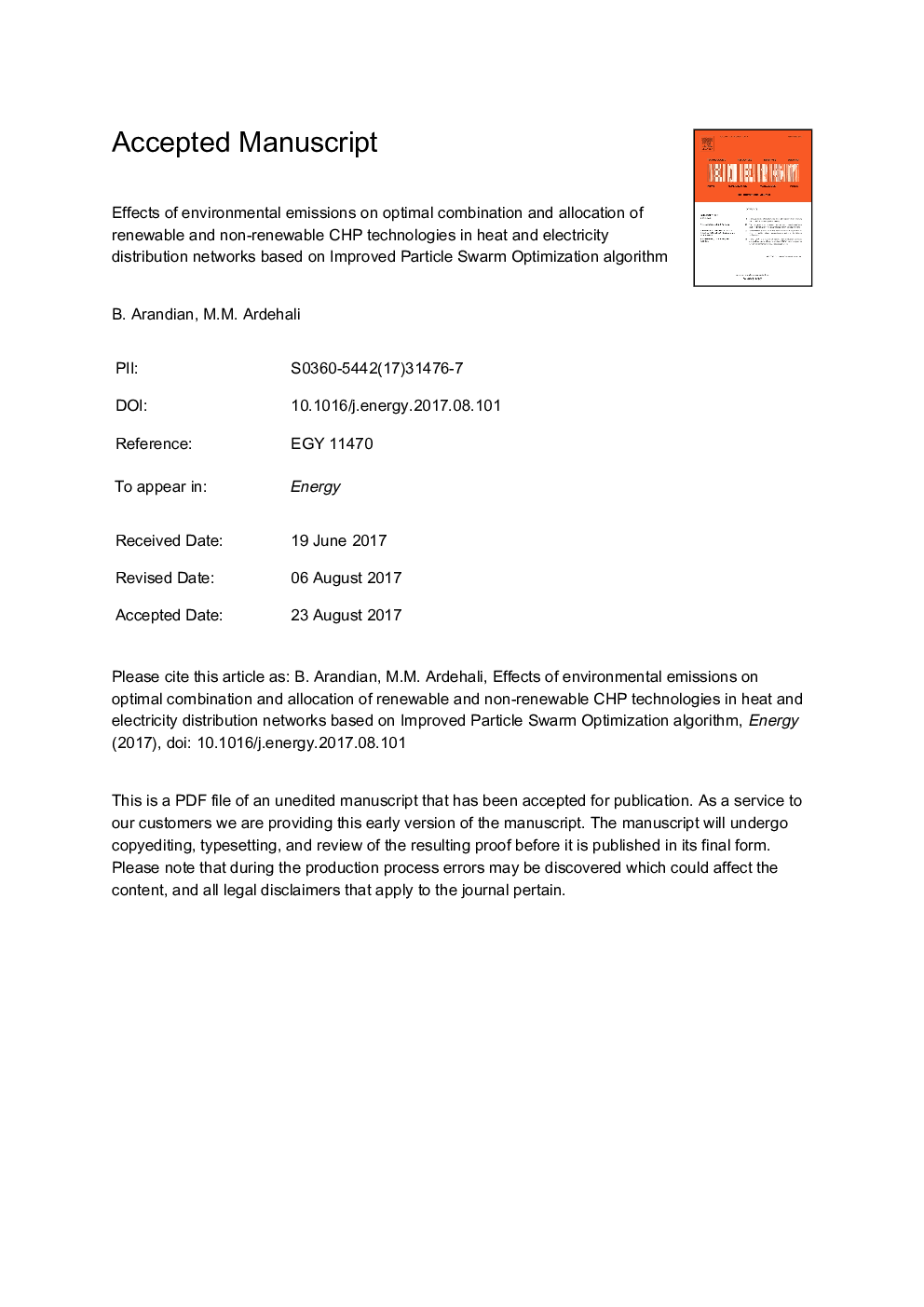| Article ID | Journal | Published Year | Pages | File Type |
|---|---|---|---|---|
| 5475426 | Energy | 2017 | 48 Pages |
Abstract
Combined heat and power (CHP) units are efficient from view point of source energy, however, for maximum utility company economic profit, it is necessary to account for all revenues and expenditures. The goal of this study is to examine the effects of considerations for environmental emissions in optimal combination and allocation of renewable and non-renewable CHP technologies including fuel cells (FC), internal combustion engines (ICE), and micro turbine (MT) in heat and electricity distribution networks based on improved particle swarm optimization algorithm, where the economic profit of utility company as the CHP owner and operator is maximized over the operation horizon. When all three technologies are available, the optimal combination and allocation results show that FC-CHP and MT-CHP are the preferred technologies and, the environmental emission costs do not allow for ICE-CHP technology to be included in the combination and, the yearly utility company economic profit is increased by 10.39, 28.37, and 13.95% due to optimal combination and allocation of CHP units in comparison with optimal allocation of FC, ICE, and MT technologies on individual basis, respectively. Also, by analyzing various HPRs, it is determined that the yearly utility company economic profit is increased when HPR is decreased.
Related Topics
Physical Sciences and Engineering
Energy
Energy (General)
Authors
B. Arandian, M.M. Ardehali,
